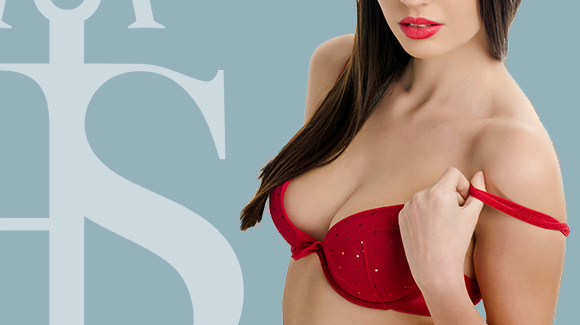
Many women with DD cup breasts experience daily discomfort – from back and neck pain to difficulty finding clothes that fit. At our London clinic, we regularly treat patients looking to reduce their breast size to something more balanced and manageable.
In this article, we walk through what happens when a patient undergoes breast reduction from a DD to a C cup. You’ll learn what to expect from the procedure, how results are shaped by surgical techniques, and what outcomes are realistic based on body type and goals.
Reducing from a DD to a C cup can significantly improve comfort, posture, and breast aesthetics.
The procedure removes excess tissue and lifts the breast for a lighter, perkier shape.
A vertical scar technique can achieve a natural result with minimal visible scarring.
Adding a lift is essential to maintain projection and nipple position after volume reduction.
Final results typically settle within 3 to 6 months, with swelling gradually resolving.
Breast reduction is not just cosmetic — it can relieve chronic pain, improve mobility, and boost confidence.
For many patients, the choice to downsize from a DD cup to a C cup isn’t just about aesthetics — it’s about comfort, mobility, and health. Large, heavy breasts can contribute to:
Chronic back, neck, or shoulder pain
Difficulty with exercise or physical activity
Skin irritation beneath the breast fold
Bra strap grooves or posture problems
Emotional or psychological discomfort
In the case of our patient, the physical discomfort and daily wardrobe struggles were a major influence. Reducing to a C cup offered a better fit for her body frame, both visually and physically.
While many patients initially request a C cup, it’s important to note that final cup size is influenced by body proportions, tissue composition, and how much reduction is safely possible. Sometimes, a D cup may be more achievable or appropriate depending on the starting point.
Breast reduction surgery involves removing excess breast tissue, fat, and skin to achieve a smaller, lifted, and more proportional breast shape. For a patient reducing from a DD to a C cup, this typically includes a combination of tissue removal and reshaping.
The surgery is usually performed under general anaesthetic and takes about 2–3 hours. Depending on the individual case, your surgeon may use a vertical (lollipop) technique or an anchor (inverted-T) incision. These methods not only reduce volume but also allow for precise reshaping and lifting of the breast.
In this case, our patient underwent a vertical breast reduction — which means the incisions were made around the areola and vertically down the breast. No horizontal scar was needed in the breast crease. This technique helped reshape the breasts into a perkier, more projected form without requiring an anchor scar.
Reducing from a DD to a C cup creates a noticeable change in both shape and weight. For our patient, the transformation resulted in:
Smaller, lighter breasts that relieved upper body pressure
More lifted and youthful appearance without the need for a separate mastopexy (breast lift)
Better posture and balance, particularly when walking or exercising
More wardrobe options and bras that provided comfort without excessive support
While every body heals differently, swelling typically subsides within a few weeks, and final results are visible around the 3–6 month mark. For this patient, the vertical technique also preserved upper pole fullness (the rounded top of the breast), leading to a naturally full shape even without a bra.
Yes – in most cases, a lift is an essential part of breast reduction surgery. When tissue is removed, the remaining breast must be reshaped and repositioned to ensure an aesthetic and natural-looking result. Without lifting the breast, a significant reduction could lead to a deflated or sagging appearance.
In this DD to C cup case, we used the vertical lift technique to preserve projection while tightening the skin envelope. This method also allowed the nipples to be repositioned higher on the breast mound – usually to the point of maximum projection or just above the inframammary fold (breast crease).
Even for patients not overly concerned with sagging, lifting the breast during reduction creates longer-lasting, more satisfying results – both visually and physically.
London Cosmetic Surgery group Berkeley Square Medical, is one of the UK’s leading providers of Cosmetic Breast Surgery. For more information about Berkeley Square Medical, please visit: https://www.berkeleysquaremedical.com/breast-reduction
Most patients can reduce their breasts by 1 to 3 cup sizes, depending on their anatomy, goals, and the surgeon’s recommendation. Going from DD to C is common and typically safe if done by an experienced surgeon.
Yes, reducing from a DD to a C cup is considered a significant change. Patients often report dramatic improvements in posture, comfort, and clothing fit, along with a more proportionate silhouette.
Absolutely. Breast reduction surgery often includes a lift, which reshapes and repositions the breast tissue and nipple. This results in a firmer and more lifted appearance, especially when combined with vertical techniques.
Most patients return to light activity within 1 to 2 weeks. Swelling and mild discomfort can last a few weeks, with final results settling over 3 to 6 months.
Some scarring is inevitable, typically around the areola and vertically down the breast. However, with proper care and technique, these scars fade over time and are often well-hidden beneath clothing.
You can express your desired outcome, but your final cup size will depend on your body proportions, tissue quality, and the surgeon’s recommendations to maintain natural aesthetics and nipple position.